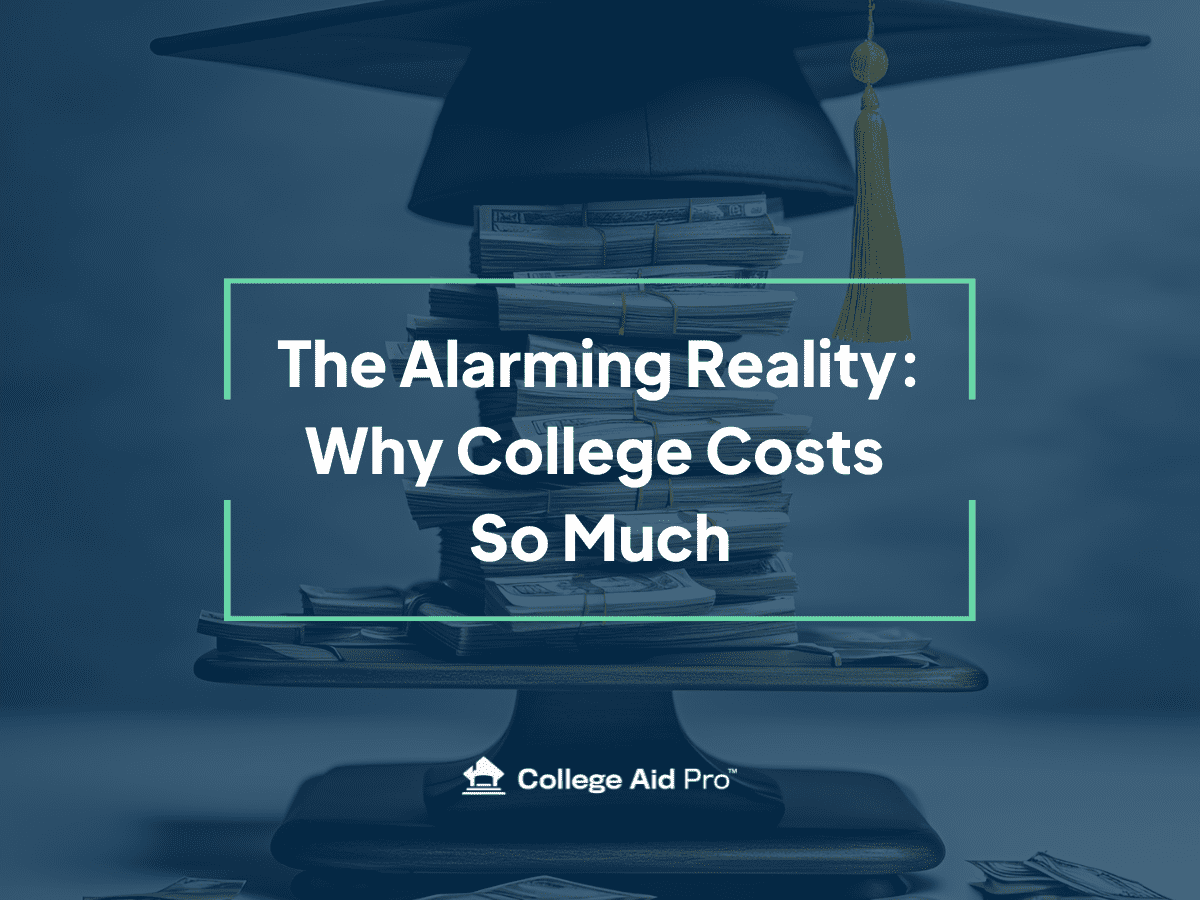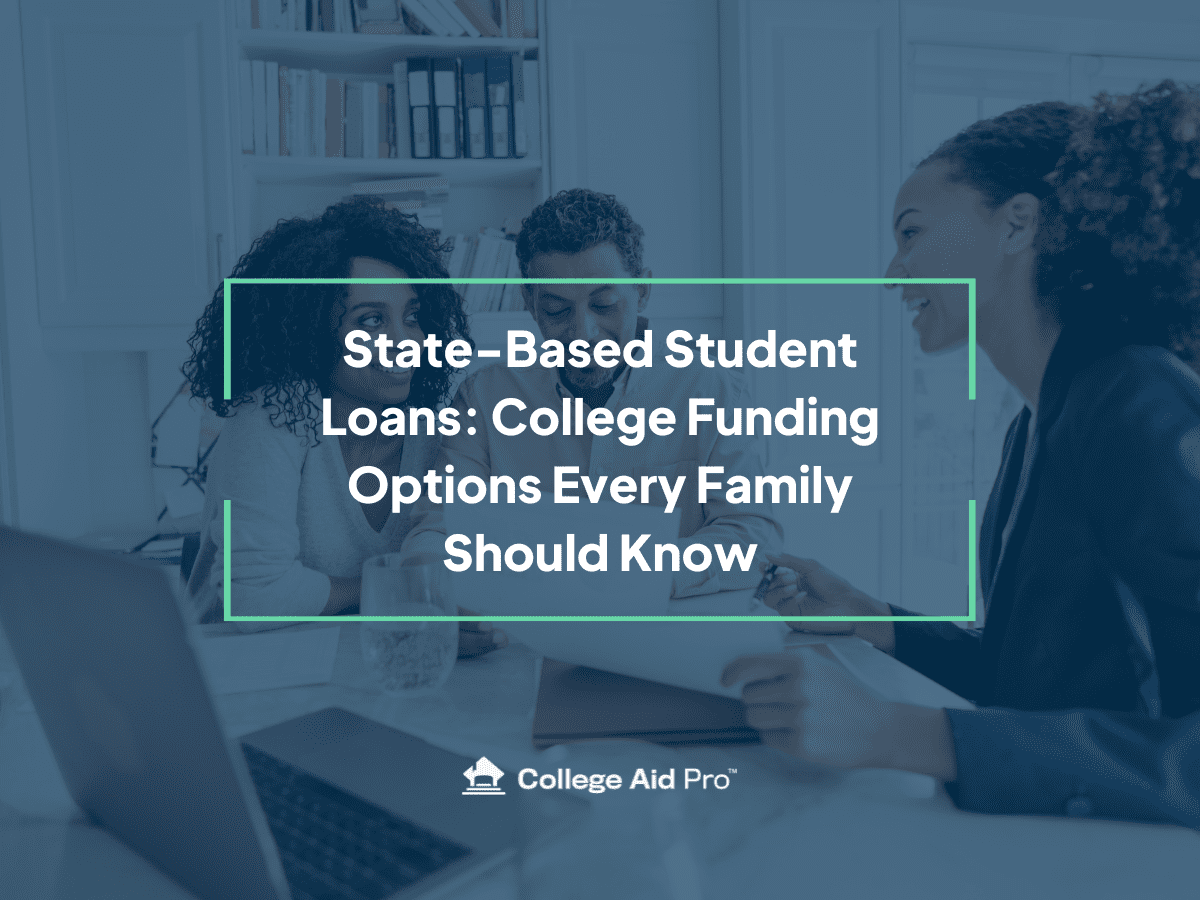Are you frustrated or even outraged that college is so expensive? I can assure you… you’re not outraged enough.
For many American families, college is one of the most significant financial investments they will ever make. Currently, there are 43 million borrowers with a collective debt of around $1.8 trillion.
 With an additional 4 million students heading off to college each year and costs continuing to rise well above inflation, we are moving in the wrong direction.
With an additional 4 million students heading off to college each year and costs continuing to rise well above inflation, we are moving in the wrong direction.
Who’s Profiting from High College Costs?
If the increasing costs of college aren’t benefiting students and their families, someone must be reaping the rewards, right? Yes, three major players are “winning” the college game. Let’s talk a bit more about each of them.
Colleges
Next year, NYU will cost approximately $99,000 per year. Soon, dozens of other institutions will join in charging over $100,000 annually. Where does all this money go? Some of it funds amazing professors, world-class facilities, and cutting-edge technology. However, a significant portion also goes to enormous marketing budgets.

College Chief Marketing Officers (CMOs) earn as much as $375,000 a year, and marketing staff can range from 9 to 24 professionals. Purdue University, for instance, has around 250 people on their marketing and communication teams, supported by millions of dollars in marketing budgets. From manicured grounds to sophisticated tours and email campaigns, colleges have become marketing machines. Students aren’t picking colleges; colleges are picking students, with families footing the bill. Many colleges have become multi-billion-dollar corporations that don’t pay taxes.
The United States Government

The Higher Education Act of 1965 aimed to make college more accessible by creating robust student (Stafford) and parent (PLUS) loan programs. Student loans are capped at $27,000 over four years, but there is no limit on the amount parents can borrow. Parents can qualify for these loans without any real investigation into their ability to repay them. There are ZERO income qualifications, meaning the government will lend an unemployed borrower $100,000 per year as long as their credit score is “OK.”
Colleges have seized this opportunity, increasing prices knowing the government will lend an unlimited amount to almost all families. The current interest rate for PLUS loans is 8.63% with a 4% origination fee. Parent and student loans are the largest asset owned by our government, making up 33% of its total assets. Let me repeat that – Student loans are THE biggest asset our government owns. Given this, one could argue that the government NEEDS college to remain expensive.
Wall Street

A wise man once said, “If you want to get wealthy, find the biggest pile of cash and stand next to it.” Wall Street always heeds this advice and certainly wasn’t going to miss this college party. If you’re fortunate enough to save for college, the default recommendation is to do so via a 529 plan. As college costs have soared, so has the popularity of this product. Currently, Americans have about $470 billion invested in 529s. Wall Street captures almost half a trillion dollars from families that can save for college.
Not able to save for college? Need to borrow? Wall Street has your back to the tune of $140 billion in private student loans. Student loans are the ONLY loans not eligible for bankruptcy, guaranteeing returns for lenders. Regardless of your family’s ability to pay for high college costs, Wall Street is winning.
Is the College Bubble About to Burst?
It’s hard to see a path where any of the benefactors are motivated to reverse the current course. Are colleges going to plead with the government and Wall Street to tighten borrowing restrictions to avoid increasing prices? Will the government tell colleges to lower prices, reducing their biggest asset amid a rising deficit? Will Wall Street ask colleges to lower prices and turn off one of their giant revenue streams? Are any of these Goliaths going to beg the American public to stop giving them their money each year? The answer is a resounding no.
Whether or not any entities or individuals had malicious intentions doesn’t really matter. This is where we are, and none of those parties are coming to the rescue.
What Can We Do to Change This?
The real superpower that colleges, Wall Street, and the federal government possess is convincing parents to go at this alone.
“Everyone figures it out.” – Everyone
But see above: 43 million borrowers, $1.8 trillion in debt. Everyone does NOT figure it out.
Who wants to admit that? Who wants to talk candidly about something that brings up feelings of failure, pain, embarrassment, and guilt? These experiences are not generally discussed openly. People go at it alone.
People do care about this. The number one financial concern for 73% of parents is paying for college. Other major concerns include:
- Doing your taxes
- Buying a home
- Planning for retirement
Let’s look at how consumers navigate these other (less concerning) challenges:
- Taxes: If you’re a DIYer, you use TurboTax. If you’re not a DIYer or have a more complex situation, you work with a Certified Public Accountant (CPA).
- Home: DIYers can use Zillow, Redfin, etc., for price transparency. Folks that want more help can get a trusted professional on either side of the transaction.
- Retirement: DIYers have robo-advisors or can walk into any bank or credit union in town. Need more hand-holding? Financial advisors are on every block of the country.
Navigating the college maze is more complicated than any of these other financial concerns most families have, yet it’s the only process consumers navigate on their own. The college bubble will burst only when consumers decide they’ve had enough and change their approach to applying, attending, and paying for college.
Taking Action: Don’t Go at This Process Alone

Simply put, do not go at this process alone. Do not accept the status quo and play into the superpower of your “adversaries.”
Understand your financial aid and scholarship eligibility. Learn how to find the right college fits at the right prices; don’t let colleges find you. Leverage colleges against one another and appeal for bigger discounts. Know which colleges will not require you to borrow anything. Understand that borrowing is okay, but know how much is too much and where to get the best rates.
At College Aid Pro, we love college. It’s why we are here. We understand there is a necessary role for both Wall Street and the federal government. But it has gotten out of control, and only together do we have the power to stop it.
We are here to help! Stay engaged with our free resources or leverage our suite of paid services. Work with our competitors if that’s your preference. Just don’t go at this alone!
Navigating the rising costs of college is challenging, but understanding the factors at play can empower you to make better decisions. By using available resources and seeking professional guidance, you can avoid excessive debt and find an affordable path to higher education. At College Aid Pro, we’re here to help every step of the way.
FAQs
How much does the average student loan borrower owe?
The average student loan borrower owes around $37,000, though this number can vary significantly based on the type of institution attended and the degree pursued.
Are student loans worth it?
While student loans can provide access to higher education, they should be approached with caution. It’s crucial to understand the terms and to borrow only what is necessary to avoid excessive debt. Our general approach for students is not to borrow more over four years than you expect to make in your first year after graduation. For example, if you plan to be an engineer, it’s okay (not ideal!) to borrow up to ~$60,000. If you plan to be a teacher, the recommended threshold would be closer to $40,000.
Can the government do anything to lower college costs?
The government can implement policies to regulate tuition increases, offer more grants, and reduce interest rates on student loans. However, significant changes require political will and public pressure.
Is there a way to avoid taking out student loans?
Scholarships, grants, work-study programs, and choosing a more affordable college can all help reduce the need for student loans. It’s also beneficial to start saving early if possible.
What is the best way to save for college?
529 plans are a popular way to save for college due to their tax advantages. ROTH IRAs offer similar advantages. Other options include Coverdell Education Savings Accounts, U.S. savings bonds, and custodial accounts.



